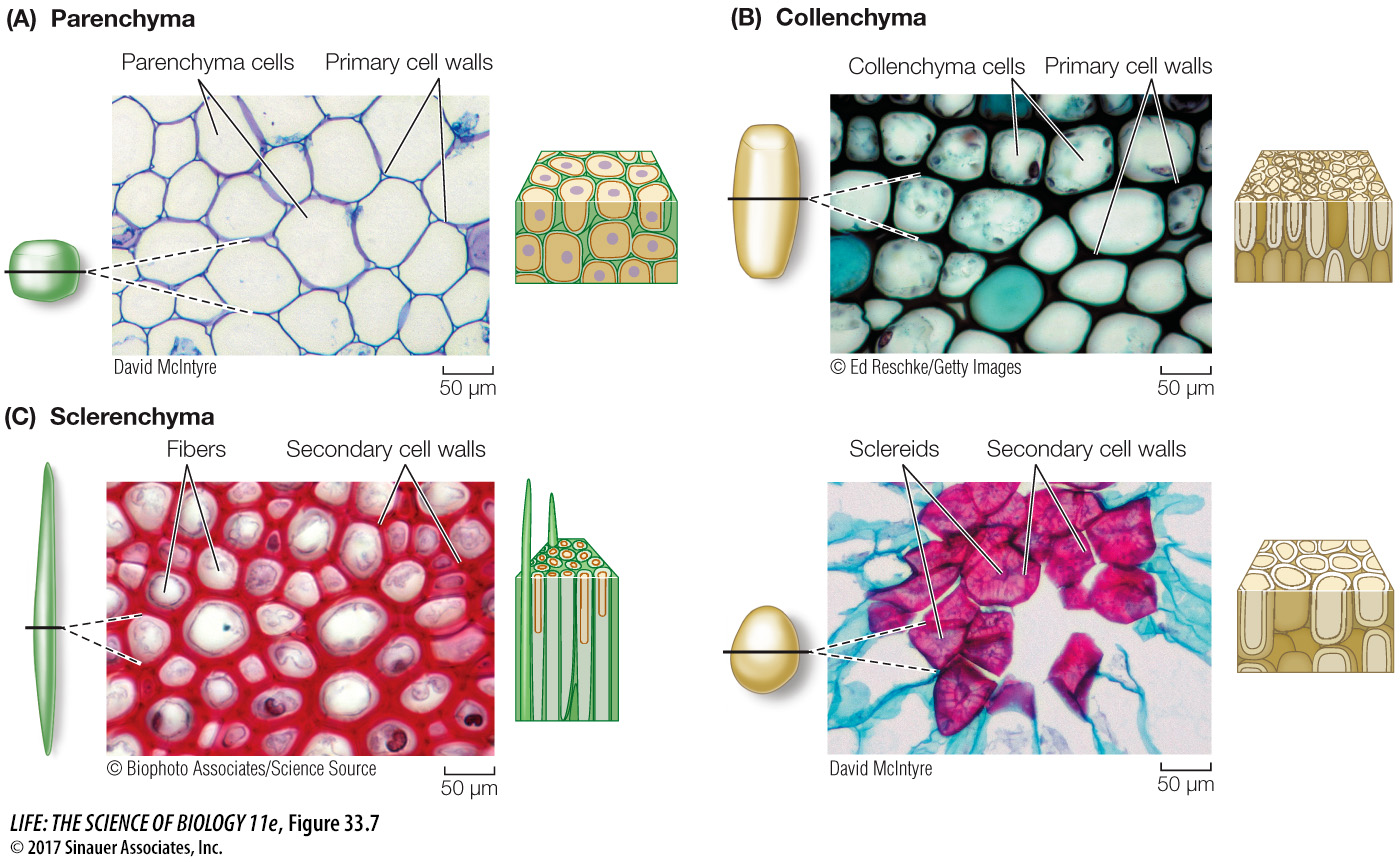The ground tissue system makes up most of the plant body
Virtually all the tissue lying between the dermal tissue and the vascular tissue in both shoots and roots is part of the ground tissue system. Therefore the ground tissues make up most of the plant body. Three main cell types are commonly seen in the ground tissue system: parenchyma, collenchyma, and sclerenchyma. Ground cell types are generally distinguished by the nature of their cell walls.
PARENCHYMA The most common cell type in plants is the parenchyma cell (Figure 33.7A). Parenchyma cells often have large vacuoles and thin walls consisting only of a primary wall and the shared middle lamella. The middle lamella is a layer of pectin that cements adjacent plant cells together (see Figure 5.21). Parenchyma cells play important roles in photosynthesis (mainly in the leaves); proteins, starch, fats, or oils may be stored in parenchyma cells of the seeds and/or roots. Many retain the capacity to divide, as when a wound results in cell proliferation.

COLLENCHYMA Collenchyma cells resemble parenchyma cells that have been modified to provide flexible support. They are generally elongated, and their primary walls are characteristically thick at the corners of the cells (Figure 33.7B). In these cells the primary wall thickens in part because of the deposition of pectins, but no secondary wall forms. Collenchyma cells provide support to leaf petioles, nonwoody stems, and growing organs. Tissue made of collenchyma cells is flexible, permitting stems and petioles to sway in the wind without snapping. The familiar “strings” in celery consist primarily of collenchyma cells.
SCLERENCHYMA There are two types of sclerenchyma cells: elongated fibers and variously shaped sclereids (Figure 33.7C). Both cell types have thickened secondary walls that enable their major function: support. Many sclerenchyma cells undergo programmed cell death (apoptosis; see Key Concept 11.6) after developing the lignified secondary walls, and thus perform their supporting function when dead. Fibers are often organized into bundles and provide relatively rigid support to wood, bark, and other parts of the plant. Sclereids may pack together densely, as in a nut’s shell or in some seed coats. Isolated clumps of sclereids, called stone cells, occur in pears and some other fruits and give them their characteristic gritty texture.